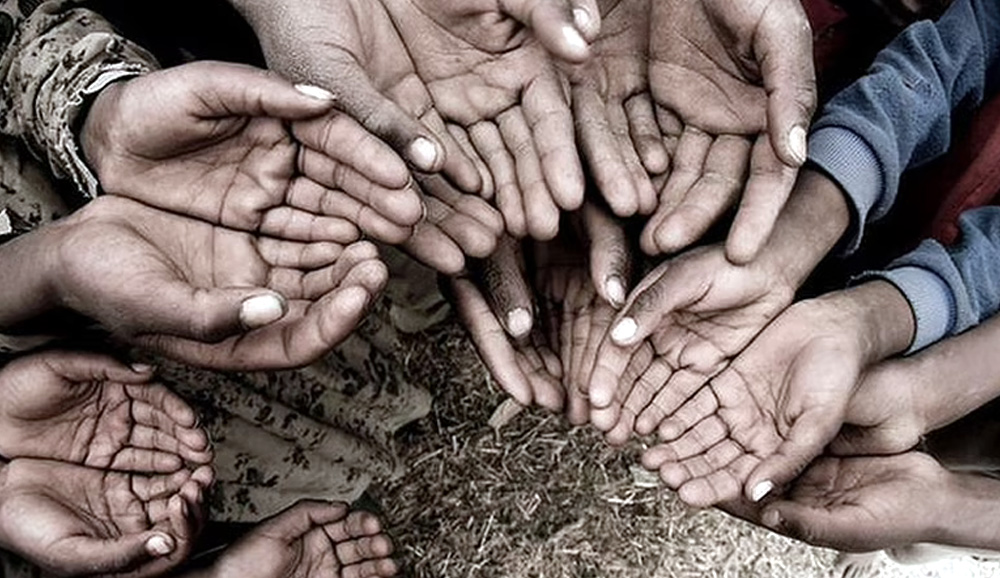
Tackling the Poverty Trap By Dr Kamal Monnoo
Regrettably, Pakistan’s approach to eradicate poverty seems to have gone wrong. Over the years, successive political governments (including the latest PDM one) have taken populist economic decisions, in turn compromising competitiveness and investment, and thereby adding to unemployment and poverty instead of denting it. Unilateral (without keeping an eye on regional benchmarks) wage increases and excessive, coercive tax drives are, in fact, detrimental to poverty alleviation, since they end up compromising opportunities & investments and invariably becoming impediments to the much-desired process of ‘trickle-down’ effect from growth & spending.
Also, governments over the years have time and again been guilty of chasing grandiose dreams by announcing big-ticket public sector projects, and that too without properly ensuring the sustainability aspects of the capital outlay and/or even without first putting proper management structures in place to ensure optimum implementation cum operational efficiencies; ironically, Punjab has been the most affected in the last three decades. The net overall effect of this faulty outlook has led to an economic environment that has not only pushed the country into an external account debt trap and inflation but has also left little options on being able to work one’s way out of it. Unless the government’s footprint is significantly reduced where the bulk of the Pakistani capital significantly changes hands from the public to the private sector, any positive results will simply not come. Meaning, the entire approach has to change, because otherwise, it will continue to be the case of a quicksand quagmire where the more one tries, the deeper one gets sucked into it.
Finally, when tackling poverty, a conscious focus on its geographic presence has to be kept in focus, and this is why it is necessary to devise policies that promote investments in areas where it is needed the most or perhaps at times for some areas to even first make the initial investment and then privatize it. Pakistan was doing both these things till the 60s and in some ways till as late as the 80s, but then somewhere the policymakers either let it go or got compromised due to corruption ensuing from rent-seeking. As a fallout, we today have the fastest rural-to-urban shift in the world – only last week, Lahore was declared the largest city in the country, signaling a negative concentration of opportunities at the cost of our agriculture.
From an international perspective, the United Nations Development Program (UNDP), when targeting poverty, tends to focus on measuring the MPI (Multidimensional Poverty) – measuring simultaneous deprivations across the three equally weighted dimensions of health, education, and the standard of living. These include metrics like access to nutrition, child and adolescent mortality, maternal health, years of schooling, school attendance, cooking fuel, sanitation, drinking water, electricity, housing, assets, and bank accounts. In short, it measures the ability of the poverty alleviation programs to address the prevalent legacy deficits (in our case, the ones prevailing since the last seven decades from the time of Independence).
From our neighboring country, in July 2023, its NITI (National Institution for Transforming India) Aayog released its national Multidimensional Poverty Index (MPI) for 2023. The big takeaway was that between 2015-16 and 2019-21, about 13.5 crore people were lifted out of poverty. The MPI provided poverty estimates for the 36 states and union territories and the 707 districts in the country. Adopting the norms followed by the United Nations for Development Programs (UNDP), the MPI measures depicted that the fastest reduction in the proportion of multidimensional poor was observed in Uttar Pradesh, Bihar, Madhya Pradesh, Odisha, and Rajasthan. Remarkably, Uttar Pradesh registered the largest decline in the number of poor, with 3.43 crore people escaping multidimensional poverty. It basically reconfirmed the findings shared by the UNDP last year when it recorded that India had managed to lift a staggering 415 million people out of poverty between 2005-06 and 2019-21. Bangladesh paints a similar sort of picture during the same period. Undoubtedly, these are incredible achievements for both countries. On the critical side, the debate over India’s gains in poverty has followed the predictable binary.
So, not surprisingly, then, the rhetorical exchanges amongst analysts often leave one confused. Where all agree, though, is about the reduction in poverty in general. They differ on the quantum of reduction and whether or not the drive has been equitable. The official measure of poverty—based on the Tendulkar and Rangarajan-led panels—employs the metric of consumption expenditure. The challenge is that this data is not available for 2021. As a result, proxy measures captured in the various surveys like the NFHS are being used. Even if the poverty is declining fast, in my view, the big question is about its sustainability because unless it is fair, it will not last. Also, while one is happy to see the developments mentioned, one would be somewhat careful because ascertaining poverty alleviation is not such a simple exercise and is invariably politicised!
Before being bowled over by the shared data from any government, perhaps it may be prudent to also closely determine the following:
– Comparative upward mobility segregated through communities, minorities, geographical locations, and ethnicities.
– Forward trends on equitable distribution of resources and opportunities regardless of race, gender, color, religion & caste.
– National trend in the concentration of wealth.- Comparative analysis of India’s very barometer for defining poverty per se.
These are the areas where the problem truly lies and can remain embedded, and more often than not, these aspects are deliberately whitewashed for personal or political agendas! Pakistan, which is sadly now falling behind even by our region’s standards, not only has its work cut out but also needs to move quickly before the problem becomes too big to tackle; many African countries face this dilemma today!
Tackling the Poverty Trap By Dr Kamal Monnoo
Source: https://www.nation.com.pk/16-Aug-2023/tackling-the-poverty-trap

